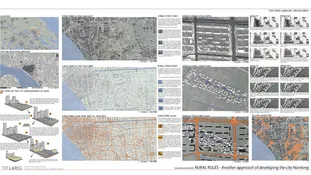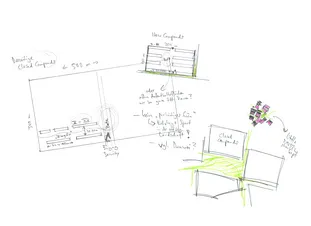
LAREG China Urban Landscape LAB
The China Urban Landscape LAB is a research focus at the TUM Professorship of Landscape Architecture and Regional Open Space (LAREG) dedicated to managing the transformation of the landscape and developing landscape structure as a fundamental qualitative framework for China’s rapidly transforming urban environment.
While the lab was newly established in May 2015, it is born out of years of research and practice on Chinese topics undertaken at LAREG. It has close connections and academic cooperations with Chinese universities (Tsinghua, Peking, Tongji Uni) as well as researchers from other institutes such as Professor Küchler from the China Center for Cultural Studies on Science and Technology at the TU Berlin. Additionally, the lab holds lectures by guest professors and presentations of our current studios, seminars and research projects. Currently, four doctoral dissertations are ongoing at the lab and three forthcoming, and each year we supervise master thesis topics on China’s urban landscape. The main past and ongoing research areas and studio projects are listed below.
Completed Dissertation Projects
Mengyixin Li: Large Parks as a Concept for Contemporary Urban Landscape Planning
Article: Qualitative Analytical Method for Urban Green Open Space Structure in Germany
12.12.2022: Associate Professor Dr. Mengyixin Li, Qi Huang and Julian Schäfer have published an article on the qualitative research in German landscape architecture in the Chinese 'Landscape Archicture Journal'.
Abstract: Given the growing demand for green, low-carbon and sustainable urban spatial development, it is imperative for landscape architects to explore the system of urban green open space and the dynamic relationship between various spatial elements in a comprehensive and systematic way, so as to promote people’s perception and identification of blue-green spatial characteristics, and further improve the quality of human settlements. In this context, a long-term qualitative research on “green open space structure” is conducted in Germany, which emphasizes the holistic grasp and typological analysis of urban green open space based on the “analytical method for green structure”. Through literature review and qualitative analysis, this research clarifies the concept and development history of green structures in Germany, and further analyzes the complexity, diversity and local identity of such green structures from the perspectives of characteristic and attribute. By means of classification and induction, the research explains the implementation approach to green structure from the two aspects of cartography and spatial type, which lays a foundation for future empirical research. Moreover, taking Beijing as an example, the research draws on the experience of Germany to conduct a qualitative analysis of the structures and types of green open spaces in the central urban area and the Shijingshan- Yongding River area. Finally, the research summarizes the implications from the analytical method for green space in Germany and the qualitative research thereon for the sustainable development of urban open spaces in China from the following three dimensions: epistemology, methodology and information visualization.
Li, Mengyixin, Qi Huang, Julian Schäfer. 2022. Qualitative Analytical Method for Urban Green Open Space Structure in Germany. In: Landscape Architecture, 29 (12): 12-19.

Cover Design: Landscape Architecture Journal 12/2022
12.12.2022: Congratulations to our students Paul Grosser, Julia Roemer, Darleen Schaefer and Hannah-Claire Virgien for contributing to the Chinese Landscape Architecture Journal 12/2022 by providing the graphic for the cover page. Their design was chosen to illustrate the recent issue! The map is taken from their studio project of summer 2022 in the rural Elbe-Area, the 'mark-landscapes' between Hamburg and Berlin, Germany.
JOINT WORKSHOP WITH ZHEJIANG UNIVERSITY 16.-19. AUGUST 2018






























